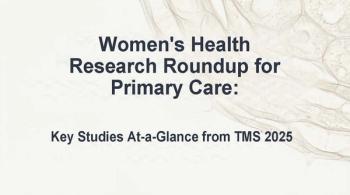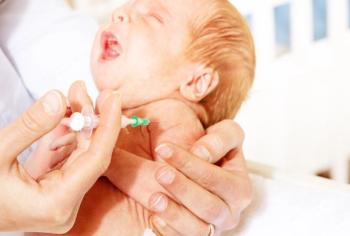
Drug Benefit Trends
- Drug Benefit Trends Vol 21 No 11
- Volume 21
- Issue 11
Most Older Adults Do Not Receive Preventive Health Services
Only 25% of adults in the United States aged 50 to 64 years receive recommended preventive health services, including influenza vaccination, cholesterol screening, and breast and cervical cancer screening.
Only 25% of adults in the United States aged 50 to 64 years receive recommended preventive health services, including influenza vaccination, cholesterol screening, and breast and cervical cancer screening. These results were published in a recent report from the CDC.1
About one-third of the adults in this age range were uninsured or underinsured. Of these persons, 63% were gainfully employed. The lack of insurance coverage in this population presents a challenge to increasing preventive health service use, according to Wayne Giles, MD, MS, director of the CDC’s division of adult and community health.
By 2015, about 20% of the total population will be in this age-group, and 70% will have received a diagnosis of at least 1 chronic condition, according to the report. Lost productivity may result from illnesses in these adults-many of which may be preventable. The projected cost of 48 million hours per week of health-related productivity loss is $49 billion per year.
References:
Reference
1. Centers for Disease Control and Prevention; American Association of Retired Persons; American Medical Association. Promoting preventive services for adults 50–64: community and clinical partnerships. http://www.cdc.gov/ aging. Published November 19, 2009. Accessed November 19, 2009.
Articles in this issue
almost 16 years ago
Untreated Chronic Mental Illnessalmost 16 years ago
Why Physicians Do Not Follow Some Guidelines and Algorithmsalmost 16 years ago
The Value of Health in Health Reformalmost 16 years ago
FDA’s New Campaign: Safe Drug Useabout 16 years ago
SSRIs and Sexual Dysfunctionabout 16 years ago
How Has Part D Influenced Access to Medications?about 16 years ago
Managing Allergic Rhinitis: The Role of PharmacotherapyNewsletter
Enhance your clinical practice with the Patient Care newsletter, offering the latest evidence-based guidelines, diagnostic insights, and treatment strategies for primary care physicians.















































































































































































































































































